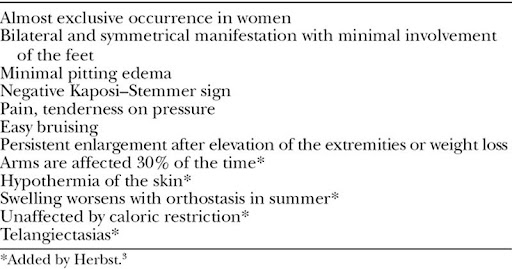For the millions of women living with lipedema, a progressive disorder of connective and fat tissue characterized by disproportionate fat accumulation in the legs and arms, the treatment landscape has long been limited. While liposuction has shown consistent benefits in reducing pain and improving quality of life, there are currently no FDA-approved medications specifically for lipedema. However, recent research suggests a promising candidate may be on the horizon: tirzepatide, a dual GLP-1 and GIP receptor agonist.
Why Explore Tirzepatide for Lipedema?
Tirzepatide (brand name Mounjaro) has already made headlines for its remarkable impact on weight loss, insulin sensitivity, and inflammation in people with obesity and type 2 diabetes. Now, a 2025 review suggests it may also offer targeted benefits for lipedema by addressing several of the disease’s roots.
Unlike traditional weight-loss medications or appetite suppressants, which have failed to impact lipedema meaningfully, tirzepatide works on a deeper metabolic and cellular level, with the potential to modulate:
- Inflammation
- Fibrotic tissue remodeling
- Thermogenesis
- Adipose tissue metabolism
These are all critical components of lipedema pathophysiology.
What is Lipedema?
Lipedema is a disorder of adipose fat tissue that results in the symmetrical accumulation of fat, primarily in the legs and arms. This condition is distinct from obesity and lymphedema and is often misdiagnosed as such. Lipedema is characterized by an abnormal and excessive deposition of fat cells, leading to pain, swelling, and a heavy, uncomfortable feeling in the affected limbs.
Understanding Lipedema’s Metabolic Landscape
Lipedema is not just excess fat. It’s a complex inflammatory disease of connective and adipose tissue involving:
- Hormonal dysregulation (notably, imbalances between ERα and ERβ estrogen receptors)
- Chronic inflammation, especially driven by pro-inflammatory M1 macrophages
- Fibrosis and extracellular matrix remodeling
- Lymphatic dysfunction and fluid accumulation
- Reduced thermogenesis, possibly due to decreased mitochondrial UCP1 expression
Dr. Karen Herbst was the first to note the persistent coldness of lipedema tissue, potentially due to this reduction in UCP1, a key gene in thermogenic energy expenditure. This metabolic resistance helps explain why caloric restriction and even bariatric surgery are largely ineffective for lipedema patients.

Diagnostic Criteria of Lipedema: What Makes Tirzepatide Different?
Tirzepatide stands out because it’s not just a GLP-1 receptor agonist (like semaglutide). It also activates GIP receptors, which are heavily involved in lipid metabolism and inflammation modulation.
In addition to promoting weight loss up to 20.9% in clinical trials, tirzepatide:
- Reduces visceral fat and improves insulin sensitivity-even in non-diabetic individuals
- Inhibits inflammatory cytokines like TNF-α and IL-6
- Shifts immune profiles toward anti-inflammatory M2 macrophages
- Stimulates thermogenesis by boosting UCP1 expression in brown adipose tissue
- Reduces fibrosis by modulating extracellular matrix remodeling
- These effects mirror many of the pathological mechanisms at play in lipedema.
From Fat Loss to Fibrosis: A Multidimensional Approach
Lipedema is often mistaken for obesity, but they are biologically distinct. One key difference is the resistance of lipedematous fat to loss, even under calorie restriction. Tirzepatide has shown an ability to mobilize “stubborn fat” stores, likely through:
- Enhanced lipolysis
- Regulation of adipokines
- Mitochondrial activation and metabolic reprogramming of fat tissue
Furthermore, the drug’s proven benefits in conditions like heart failure with preserved ejection fraction (HFpEF) and metabolic-associated steatohepatitis (MASH)-both of which involve fat accumulation and fibrosis-bolster its case as a lipedema treatment. In these settings, tirzepatide reduced inflammatory fat reservoirs, improved glycemic control, and decreased tissue fibrosis.
Could Tirzepatide Become a Medical Treatment for Lipedema?
We aren’t there yet, but the science is catching up.
There is still no proven pharmaceutical treatment for lipedema. Standard interventions today include:
- Compression therapy
- Liposuction and lymph-sparing liposuction
- Anti-inflammatory, low-refined carb diets
- Lifestyle support, including physical therapy
But for patients who struggle with mobility, have concurrent obesity, or face barriers to surgical care, a medical treatment option could be life-changing. Tirzepatide is not yet approved for lipedema, and no dedicated clinical trials have been conducted in this patient population. However, the evidence base is growing, and researchers are beginning to call for trials targeting lipedema specifically.
How Tirzepatide Compares to Semaglutide
Both drugs fall under the GLP-1 agonist category, and semaglutide (Ozempic, Wegovy) has also shown benefits for weight loss and glycemic control. However, semaglutide:
- Does not activate GIP receptors
- There is less evidence supporting antifibrotic or thermogenic effects
- May offer some symptomatic relief in cases with concurrent obesity, but not necessarily address lipedema’s root pathology.
Tirzepatide’s dual-receptor mechanism, along with its impact on UCP1 expression, mitochondrial uncoupling, and immune modulation, could make it the first candidate to holistically address the metabolic and inflammatory terrain of lipedema.
A Cautious but Hopeful Outlook
At Lipedema Surgical Solutions, we remain at the forefront of researching and providing the most effective care for lipedema. While surgery continues to be the most proven path to symptom relief, we recognize the promise of emerging therapies like tirzepatide.
Dr. Wright’s research has shown that liposuction can improve pain, reduce swelling, increase mobility, and enhance quality of life in lipedema patients. As the medical field evolves, we are hopeful that targeted metabolic therapies may one day complement surgical care or offer new avenues for those who cannot pursue surgery.
If you are living with lipedema and curious about your treatment options-including whether you may be a candidate for new therapies-schedule a consultation with Dr. Thomas Wright.
Together, we can explore the best path forward-one grounded in science, shaped by experience, and centered on your quality of life.
Sources:
Buck DW 2nd, Herbst KL. Lipedema: A Relatively Common Disease with Extremely Common Misconceptions. Plast Reconstr Surg Glob Open. 2016 Sep 28;4(9):e1043. doi: 10.1097/GOX.0000000000001043. PMID: 27757353; PMCID: PMC5055019.
Viana, Diogo & Câmara, Lucas. (2025). Metabolic Therapy for Lipedema: Can Tirzepatide Overcome the Treatment Gap?. Journal of Pharmaceutical Research International. 37. 21-28. 10.9734/jpri/2025/v37i37664.
